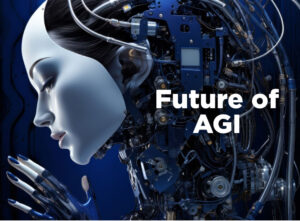Artificial General Intelligence (AGI) has been a dream for many in the tech world for a long time. It is the idea of creating a machine that can think and solve problems like a human, making decisions across various tasks, just as we do. While we are still far from fully achieving AGI, OpenAI has taken a significant step forward with the development of the O3 model. This model represents a major leap toward machines that can handle more complex, diverse tasks and solve problems with abilities that closely resemble how humans think.
What is the O3 Model?
O3 is a kind of advanced AI system by OpenAI that tries to understand and solve problems in ways more flexible and adaptable than previous models. Traditionally, AI systems have been specialized in one task at a time. For example, some AI may be very good at recognizing pictures, while others may be good at language translation. But the systems are pretty bad at asking them to switch between different kinds of problems or even to think creatively about new challenges.
The O3 model tries to overcome all these limitations. It has been designed to be able to not only perform some specific tasks but also to be adaptable to various problem-solving situations. It is more general, just like the human brain can handle so many different kinds of challenges-from math problems to real-life decisions.
The Way to More Human-Like Problem Solving
The O3 model mimics human problem-solving by thinking in a non-linear way. Instead of following a strict step-by-step process, it draws on past experiences, combines knowledge, and makes intuitive decisions. This allows the O3 model to analyze complex problems creatively and find effective solutions, similar to how humans do.
For instance, if a person is requested to assist in solving a complicated task, the O3 model will decompose the problem into smaller parts, identify relevant information, and then consider different approaches. It does not strictly follow rules or instructions but rather a more flexible approach that allows it to handle unfamiliar tasks with more success.
Generalization: A Key Step Toward AGI
One of the important steps toward achieving AGI is a system’s ability to generalize, meaning applying knowledge from one area to solve problems in another area. O3 is an excellent example. Traditional AI models are usually confined to specific domains.
For example, an AI trained to play chess wouldn’t be able to help solve a medical diagnosis problem. However, the O3 model has the capacity to learn from multiple domains and adapt the learned knowledge into novel uses. This is one of the defining features of AGI since an AI with this characteristic could attempt a variety of real-world problems.
The O3 model is not merely a matter of learning and applying information. It is also improving as it goes along. It can reflect on its own processes and correct mistakes, much like humans do. This means that it can adapt and become better over time, learning from experience in a way that was previously difficult for machines to achieve.
Ethical Considerations and Challenges
While the development of models such as O3 brings us one step closer to AGI, it also creates important questions with regard to ethics, responsibility, and control. For instance, human-like problem-solving abilities in a system could cause significant impacts in jobs, privacy, and security. It becomes important to ponder how we are going to make sure that such models are utilized for good and how we might manage their development in such a way as to benefit society.
Also, the intricacy of the O3 model means we have to be careful in ensuring that it stays clear and understandable. If an AI system is capable of choosing solutions based on hard problem-solving, we need to trust its reasoning and see how it has arrived at a conclusion. This is something that developers, including OpenAI, will have to be very careful about as the technology advances.
The Future of AGI
The O3 model is not the final step toward AGI but is an important milestone. Showing that AI can think and solve problems in a way more human-like than ever, OpenAI has moved us one step closer to a future in which machines are able to adapt and handle all sorts of tasks with flexibility and creativity. Not just machines following instructions, it’s about machines that can learn, adapt, and think.
As we continue to upgrade models like O3, this opens up incredible possibilities for what is to come. AGI could one day possibly help solve a few of the world’s more difficult problems such as curing disease or reversing the effects of climate change. And yet, what the O3 model offers to us is simply a glimpse at what that kind of future will look like: an exciting move forward in the journey of intelligent machines toward thinking like humans.
Looking Ahead: The Future of Smarter Problem Solvers
OpenAI’s O3 model is the next big step in artificial intelligence. It’s a step closer to achieving AGI, with human-like problem-solving abilities that can change the way we interact with machines. Although we are still far from achieving the full realization of AGI, the O3 model already shows the possibility of more flexible, adaptable, and intelligent systems that could play a significant role in solving the world’s complex challenges in the future.
Learn more about what is new in OpenAI at HiTechNectar!
FAQ
Q1. What is OpenAI’s O3 model?
Answer: OpenAI’s O3 model is an advanced system designed to solve different types of problems more flexibly, similar to how humans think. It can handle a variety of tasks and adapt to new challenges.
Q2. How does the O3 model work?
Answer: The O3 model works based on breaking up problems, trying to find a pattern, and developing the best possible solutions for such problems. It learns through experiences and tends to improve, employing flexible approaches in solving a range of different challenges.
Q3. Is O3 approaching AGI?
Answer: Yes, the O3 model is a step towards AGI. It shows that a machine can think and try to solve a problem in ways more like a human than before, even though we still are not completely at AGI.
Recommended For You:
OpenAI Introduces GPT-4o, a Faster and Free Model for all ChatGPT Users
Meet Sora: The Next-Gen Video Generator by OpenAI
Google Veo 2 vs. OpenAI Sora: Which AI Video Content Creator Is Best?



